Friday October 17, 2025
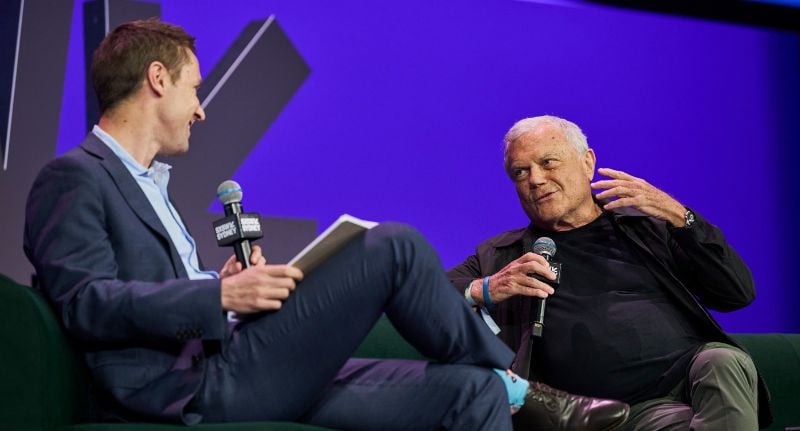
SXSW Sydney: Five ways AI is redefining advertising, according to Sir Martin Sorrell
Sir Martin Sorrell has outlined the marketing and advertising industry’s five biggest areas being impacted by AI and the subsequent consequences – both good and bad – during a SXSW Sydney session hosted by editor-in-chief at the AFR, James Chessell.
Visualisation and copyright
Sorrell argued the impact AI has on visualisation and copyright is causing the collapse of what the industry has always known, in terms of time and cost, particularly for TV commercial production.
“This has huge ramifications for the holding companies who probably have about a third of revenue that is dependent on the ‘old’ or ‘traditional’ way of producing things,” he said.
“With AI, you can produce at a fraction of the cost in a fraction of the time.”
Drawing on an example from a client, he said a $2.5 million commercial would typically take four months to be shot in Eastern Europe. But done agentically, it was completed in just four weeks, for a fifth of the cost.
As Sorrell outlined, for holding companies or other agencies that rely on TVC production for revenue, this shift will prove a challenge. The traditional, resource-heavy model is being undercut.
But the same disruption presents an opportunity for brands with smaller budgets or agencies with less resources to compete creatively on a more level playing field.
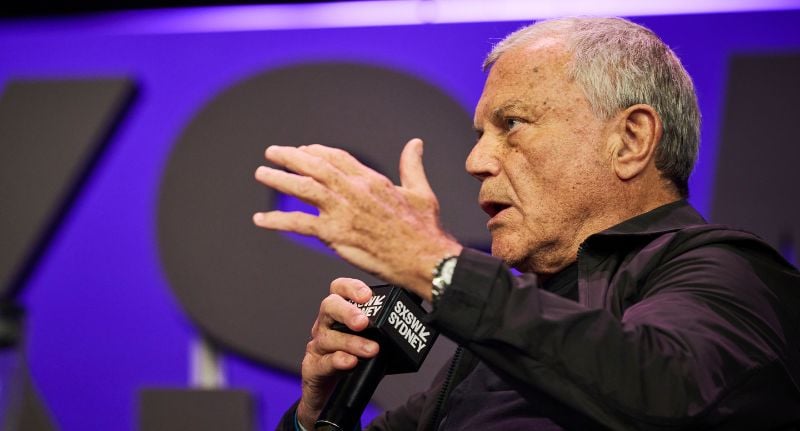
Sir Martin Sorrell
Personalisation at scale
Coined “Netflix on steroids”, AI could allow for major personalisation at a scale the industry hasn’t necessarily previously reached.
In Netflix’s case for example, historically they would make thousands (if not millions) of executions for major shows like Squid Game or Narcos, but with AI, “we can now do multiples of that,” Sorrell said.
The caveat, however, is that Sorrell admitted there will be fewer copywriters and fewer visualisers needed, which would inevitably reduce employment. But looking optimistically, he said the scale of personalisation using AI could be “so huge” that it opens up new employment opportunities.
“The output will be better,” he argued. “Output that humans can add the human dimension to.”
Media planning and buying
“It’s quite clear that media planning and buying will become a totally mathematical algorithmic activity,” Sorrell said with strong authority. “If there’s 250,000 people in the world who are media planning and buying today, there won’t be in two or three years time.”
Again, this shift could mean widespread job losses and a diminishing role for human intuition in favour of machine-led optimisation. However, the flip side is greater efficiency and precision.
General efficiencies
The obvious area AI is impacting the industry is in general efficiencies, both client and agencyside.
Sorrell drew on another client example to prove his point. Working with NVIDIA, AWS, and Adobe on outdoor broadcasting, once upon a time the brands would spend $2 million a year on trucks and park them outside cricket matches or football matches. But now, he said, “we can produce an AI and cloud solution at a fractional cost, probably about 10 or 20 per cent of the cost.”
Democratisation of knowledge
The final, and most powerful, area is how AI is freeing up information and democratising knowledge. Sorrell said the issue that “bedevils” clients and agencies is “politics with a small p”.
Explaining what he meant by this, he said it is “people building silos or verticals by controlling information”.
“It sounds a little strange, maybe, but it is the most powerful thing that AI will do.”
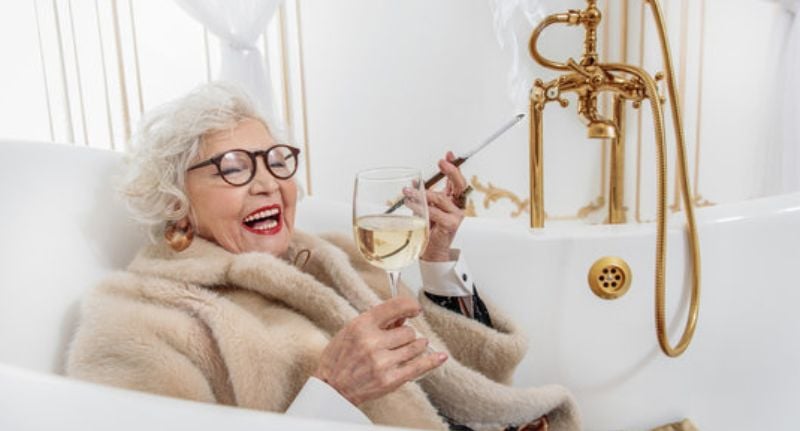
Why are brands ignoring Australia’s richest demographic?
Marketers have long been obsessed with youth, but in doing so, they’re missing out on the most affluent and influential demographic in Australia: women aged 45 and over.
Are Media is pushing back on that fixation.
Its latest longevity-focused initiatives highlight how women 45+ are driving Australia’s cultural and economic transformation, and why brands that keep ignoring them are walking away from billions in potential revenue.
With over 65% of Australia’s $5 trillion intergenerational wealth transfer expected to go to women, the company is urging advertisers to take the longevity economy seriously.
Are Media’s CEO Jane Huxley discussed the same issues while fronting a talk at SXSW Sydney asking: “If the role of marketing is to sell products and services, why is it that they are not selling to the people who are able to buy?”
She continued: “Not only are we controlling most of the discretionary spend, but again, in the area of women where we specialise at Are Media, we’re controlling 80 to 85 per cent, and we are influencing probably another 15 to 17 per cent of that spending through our kids, our families, people we know.”
Yet, as Huxley pointed out, only around 2 per cent of advertisements in Australia carry representation of women older than 45.
“I don’t understand where the missing link is between marketing and money,” she said.
A blind spot
Michael Clinton, global longevity expert and founder of ROAR Forward, says the industry’s youth obsession dates back decades.
“It began with the baby boomers,” he explained. “At the time, they were the largest generation, so marketers and advertisers focused heavily on them. But as that group aged, the industry didn’t evolve alongside them. Instead, marketing stayed fixated on whatever generation was currently young.”
He said the result has been a massive blind spot.
“Once consumers hit around 55, they effectively disappeared from most marketing strategies. Yet now, more than 30% of the population in both the US and Australia is over 50, and they’re wealthier, more active, and more influential than ever.”
According to Clinton, if the 50-plus market were its own country, it would be the third-largest economy in the world, worth an estimated $8.3 trillion in spending power.
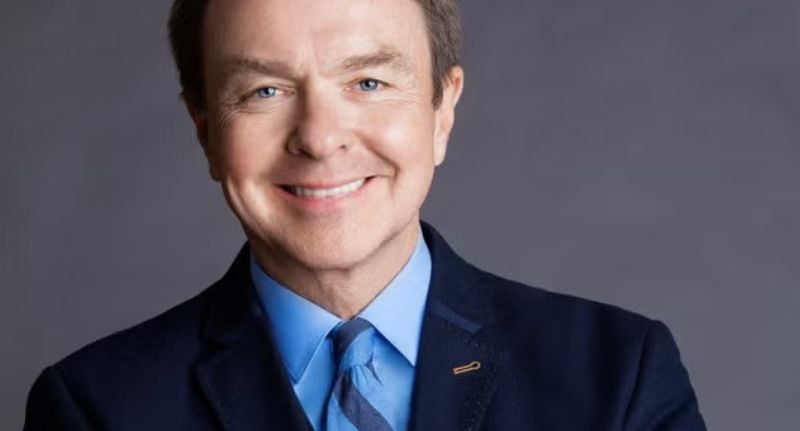
Michael Clinton, global longevity expert and founder of ROAR Forward
Structural bias
Are Media’s Head of Client Strategy, Toby Boon said the industry’s inability to keep pace is partly structural.
“Many of the media planning tools used across the industry still treat audiences in rigid, outdated ways, as if a 55-year-old behaves the same as a 95-year-old, or that a 54-year-old consumes media the same way as a 25-year-old,” he said. “Those tools are a real hindrance.”
While agency partners are eager to address the issue, Boon said systemic barriers remain. “There’s a lot of enthusiasm, but the systems haven’t yet caught up with the reality of today’s audiences.”
He added that the industry’s youth-heavy workforce can make it harder to connect with older audiences.
“We’re often early adopters, chasing new technology, ahead of the curve, but in this area, we’re not leading. The wider population is catching up faster than we are, and in some cases, they’re already ahead.”
Breaking down stereotypes
Clinton agrees the problem is compounded by cultural bias. “Too often, people over 50 are portrayed as grandparents, slowing down, or tech-phobic. Those tropes are antiquated and outdated,” he said.
But the image is shifting. “We’re seeing authentic, aspirational portrayals of people in their 50s, 60s, 70s and beyond,” Clinton added. “Celebrity culture is helping, look at Oprah Winfrey at 71. She’s vibrant, active, and redefining what ageing looks like.”
Boon said the change is also visible in publishing.
“We’re starting to see more inclusive imagery across film, television, music, and fashion, and, of course, magazines, that celebrates people who are innovating in this space,” he said.
“Recent marie claire covers featuring Renée Zellweger, 56, and Jessica Chastain reflect that shift.”
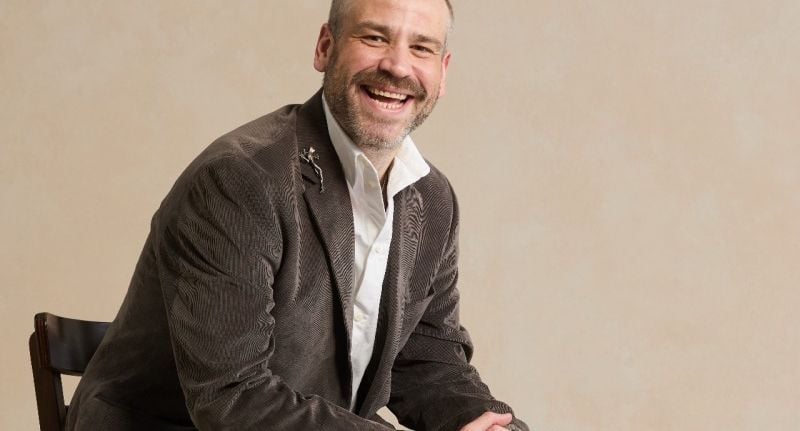
Are Media’s Head of Client Strategy, Toby Boon
Authenticity matters
The over-45 audience isn’t shy about calling out brands that miss the mark.
“When we talk to our partners, authenticity is one of the biggest issues that comes up,” Boon said. “This audience is extremely vocal and discerning. If something doesn’t feel authentic, they notice immediately and respond quickly.”
He said Are Media’s research shows this group “votes with their wallets,” supporting brands that reflect them accurately and walking away from those that don’t. “They’re not just looking for token representation; they’re looking for authenticity in a meaningful way.”
The creative gap
Clinton says one of the biggest problems is who’s missing from creative decision-making.
“In the Mad Men era, men decided what women wanted, without women in the room to correct them,” he said.
“Today, the same dynamic plays out with age. Around creative tables, there’s often no one over 50 to challenge outdated or inauthentic ideas about this audience.”
His advice: hire older creatives, or at least make sure their voices are represented.
“Representation must extend beyond gender and race to include generational perspectives. When people over 50 help shape campaigns, the results are more authentic and effective.”
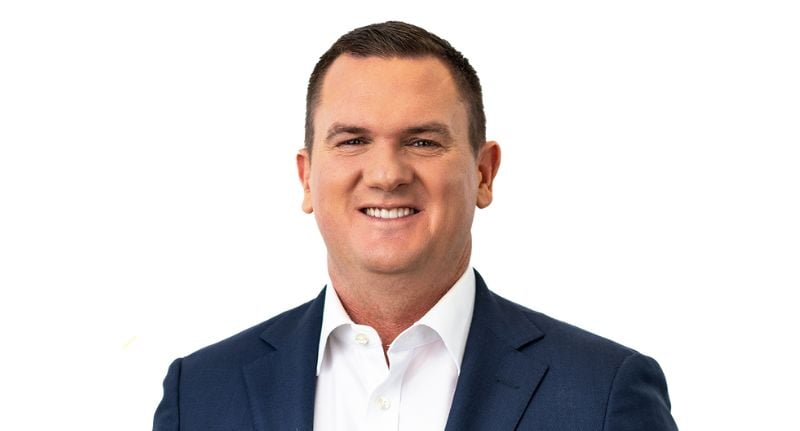
4BC confirms breakfast shake-up as Peter Fegan departs amid ratings dip
4BC has announced changes to its on-air lineup, confirming that Peter Fegan has finished up as host of 4BC Breakfast.
The announcement follows the release of the latest radio ratings, which showed 4BC Breakfast dipping to a 3.6% share, down from 4.1%. The station’s overall share rose slightly to 5.3% (up from 4.8%), while cumulative audience fell to 118,000 (-16,000).
Brisbane remains one of the country’s most competitive radio markets, with established FM players and national talk formats all vying for attention.
In a note to staff seen by Mediaweek, 4BC Content Manager Siobhain McDonnell thanked Fegan for his dedication to the station and his contribution to bringing Brisbane’s stories, and sport, to life.
“I thank Peter for his dedication to the station, his show and for bringing a cracking NRL season to life on air with his passion and enthusiasm for his beloved Broncos,” the email read.
The changes mark the latest move in what continues to be a competitive and fast-evolving Brisbane radio market.
“Brisbane continues to be a tough radio market, and I am committed and determined to deliver programs that resonate with the Brisbane community and continue to grow our loyal 4BC audience,” McDonnell added.
New breakfast show to be announced soon
While 4BC hasn’t yet revealed who will permanently take over the breakfast slot, the network confirmed that “familiar voices and friends of 4BC” will fill the program from 5.30am to 9am for the remainder of the year.
The station says the upcoming announcement will reflect its ongoing commitment to local storytelling and audience engagement.
“A new Breakfast program will be announced in due course,” the statement said. “In the interim, familiar voices and friends of 4BC will continue to keep our Brisbane audience entertained and informed every morning.”
Fegan’s departure comes just weeks after 4BC Mornings announcer Bill McDonald has announced he was leaving the station.
In the most recent radio survey, the Mornings slot saw a lift from a 4.3 share in Survey 4 to a 5.5 share in Survey 5. A lift, but still behind its only other news talk rival ABC Brisbane with a 6.7 share (also up from the previous survey, then recording a 5.3 share).
This is reflective of the stations market position and Mediaweek notes that McDonald’s audience was higher than 4BC’s 4.8 average share.
Nine has informed Mediaweek that the Mornings seat will be filled until the end of the year by Jason Matthews, a producer who has been working at 4BC since October 2024.
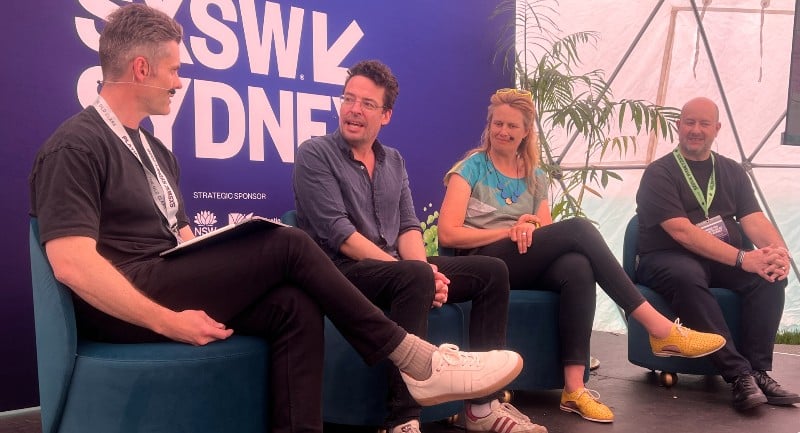
SXSW Sydney: Our failure to forget the past can help us predict the future
If you spend long enough on this planet, you eventually start to feel like you have seen and heard most things before. There’s that great line from the American author Willa Cather who famously wrote: “There are only two or three human stories, and they go on repeating themselves as fiercely as if they had never happened before”.
This idea was at the heart of a SXSW Sydney panel on Thursday afternoon moderated by James Taylor, Head of Research at The Growth Distillery. Joining the panel, titled ‘There’s No Such Thing As Unprecedented: How Our Failure To Remember The Past Can Help Us Predict The Future‘ was DEC PR CEO Michael Henderson, UTS Professor of History Anna Clark, and The Daily Telegraph columnist Joe Hildebrand.
The panel was pitched as an exploration of the way people tend to erase past crises from memory and what prompts us all to regularly buy into the cycles of panic and overreaction.
Following the wide-ranging panel discussion, Mediaweek caught up with James Taylor to find out what he got out of the panel and to get a few of his own thoughts on the issues raised.
Mediaweek: What is the value of a discussion like this?
James Taylor: It’s two things. Firstly, through the long history of humanity, basically everything that’s happened here has some analogous experience, and it will help us predict how people are going to react to what’s happening in the world today.
Just like we’re talking about a potential AI market bubble, we can look at how the dot-com bubble eventuated and how consumers reacted to that, if it still turns out to occur. We can think about the rise of AI as analogous to the rise of the internet, and even like you can go even further back and say the rise of AI was analogous to the rise of the automobile, to the rise of the aeroplane. So all these new technologies change people’s lives, there is precedent, and you can kind of figure out what people are going to do next because of that.
The second thing, though, is that we also need to remember that everybody’s going to experience it for the first time. So Gen Z is going through the rise of AI for the first time. They have not experienced a technological change like that before.
We may have experienced something as an older millennial. I may have experienced something with the rise of the internet as a little child. So we’ve also got to be mindful and empathetic to everybody that they are going through.
Mediaweek: These types of conversations can feel a little bit like those chats we all have when friends are sitting around sort of late at night with a few empty glasses littering a table and talking through the weighty issues of the world. How important do you think conversations like that are for people to process issues?
James Taylor: There’s a phrase around understanding history is the only way that you can predict the future because it’s the only thing we’ve got. So understanding history is vitally important.
The more decision makers in business, in politics, in society, in the media understand what’s happened in the past, it fully equips people to actually be able to deal with living today. I think these are some of the most important conversations that people can have. While it can be an issue, especially talking about the Fermi Paradox or some of those things that Joe mentioned, there can be an element of fun to it.
Mediaweek: How important is it to predict the future, versus just taking opportunities presented in the moment?
James Taylor: When we’re talking about the future, there’s a long spectrum of times. The future can be tomorrow, the future can be next month, the future can be next year, it can be ten years, a hundred years from now.
So when we’re talking about the future, you can take whatever horizon you want. I think it’s important to be able to understand, if we’re talking about AI, then predicting next month is important just as much as predicting next year.
Mediaweek: In the panel you raised the spectre of the apocalypse. Are we approaching the end of the world?
James Taylor: No. No? No, no, no. I think one thing we found in our talk today is that predicting the end of the world is something that’s been going on as long as humanity itself.
We can probably feel a little assured that that is our instinct, and instinctually we’ve been wrong every time.
Mediaweek: What from the past do you think we need to start reintegrating back into the world?
James Taylor: That’s a good question. I think just knowledge of history… knowledge of what’s going on, knowledge of what our people need to know, because we need to be empathetic for them and not give them too much crap.
Understanding what people need to know.
Mediaweek: Is it that we have forgotten what people have been through, or do we just not care?
James Taylor: It’s a bit of both, to be honest. It’s difficult to make people care, but when you realise that it’s actually really interesting, because they’ve experienced the same stuff that we’ve experienced, so you can actually learn a lot through that.
Mediaweek: What do we need to take to say goodbye to?
James Taylor: Thinking that we’re going through things for the first time.
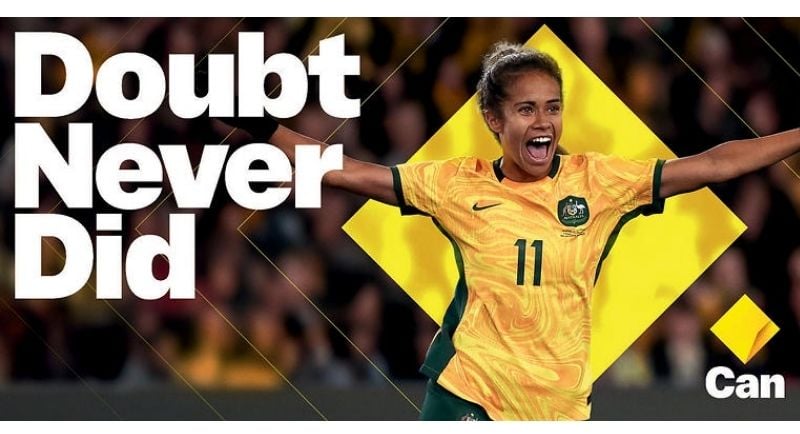
SXSW Sydney: How Commonwealth Bank turned doubt into its new brand superpower
Commonwealth Bank’s recent brand platform ‘Doubt Never Did‘ has flipped a familiar marketing truth on its head, by asking if that uneasy, uncertain emotion brands often try to bury could actually be the key to building trust.
Speaking on a panel at SXSW Sydney, Dianne Everett, general manager of brand, partnerships, and creative at CommBank said Australians are facing unprecedented uncertainty, and despite being a shared experience, doubt is not something commonly discussed.
“This little word, doubt. What an insipid, dirty little world,” she joked. “I would actually bet my bottom dollar that we are unified by all cutting moments of it, it’s a word that not only unites marketers in a room, it unifies humanity.”
The brand platform embraces vulnerability with a double-negative rally cry of sorts. To test the waters, it started as street posters of the word “doubt”, which 24 hours later, were crossed out to read “do it”.
“Our goal was to make doubt a little bit of a talking point, a way of normalising what we all share… and this thinking culminated in this platform,” Everett explained.
For Emma Robbins, chief creative officer of M+C Saatchi Melbourne, CommBank’s creative agency partner, the idea of chasing discomfort was always deliberate.
“Comfort kills creativity,” she stressed. “If you’re coming up with an idea and you feel comfortable with it… there’s a problem with it. And what we felt presenting this idea of doubt, we were nervous.
“We were nervous about how it would land, we were nervous it was language CommBank hadn’t used before, we were nervous about how it would go up the chain, and also how it would be received by the public.”
But the three words – doubt never did – wrapped so beautifully around each other, she argued, and around a human truth that people are tired of comparing themselves to others, and dreams look different for everybody.
“I think what we love most about it is it’s not a product truth for CommBank, it’s a human truth. It works inside the brand, it works outside the brand, and for Australia, it sums people up to a T,” Robbins said.
Beyond advertising, CommBank has transformed the idea into a national engagement program, particularly for regional areas. Its “Doubt Never Did” bus tour has travelled to a number of towns including Wagga Wagga, connecting with more than 200,000 Australians providing financial literacy and scam awareness.
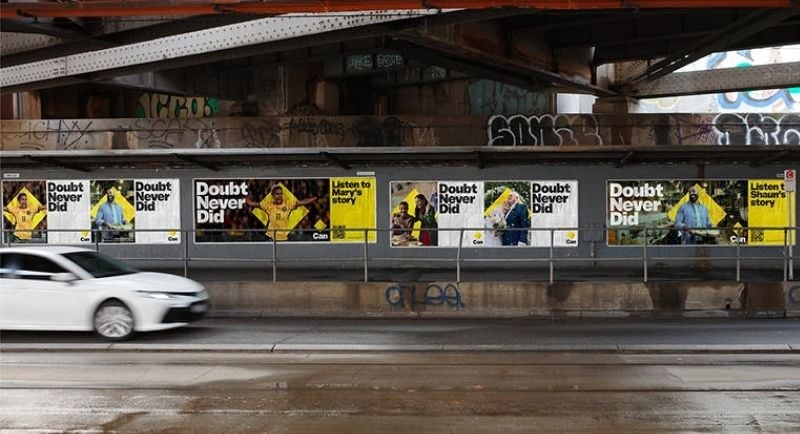
“We’re super pumped about what it means to take grassroots financial literacy out into the nation, and we’re deeply committed to it,” Everett said.
Everett and Robbins were joined on the panel by media personality and journalist Georgie Tunny, who said from an outsider perspective, seeing a brand embrace something each and every person experiences, was great.
“There’s an argument that the antidote to doubt is trust, so for you to trust me and want to go on this journey together, I have to give something up of myself for you,” she said, reflecting on her experience of interviewing vulnerable people as a journalist.
“I’ve been a people-pleaser from the womb, and I feel like brands are the ultimate people-pleasers. So it’s great to see that experience reflected by such a big one.”
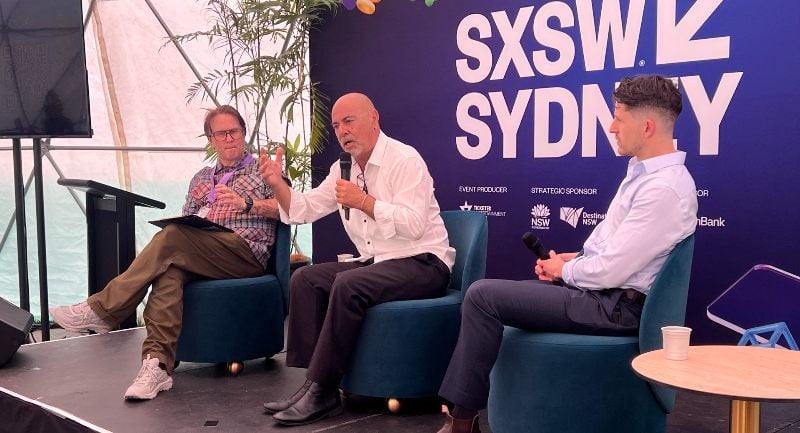
SXSW Sydney: From the typewriter to TikTok, at the end of the day it is about maintaining authority
There’s a romanticism to talking about the pre-Internet era newsroom that is always a thrill to hear veterans discuss. But, equally, it’s also deeply compelling to hear journos talk about embracing new tools and new ways of engaging news audiences.
That was the sweet spot that The Daily Telegraph’s Entertainment Editor Jonathon Moran hit as he led a conversation at SXSW Sydney on Thursday afternoon ‘DTTV- Typewriter to TikTok’. He spoke to veteran crime reporter Mark Morri about his early years on the paper, starting with a typewriter back in 1980, then progressed the conversation to discussing the modern newsroom with colleague Josh Hanrahan.
Morri and Hanrahan discussed at length how they engage with their audiences through a mix of text articles, but also videos recorded in the newsroom. It was interesting to hear them discuss how the two formats, as different as they are, still engage the audiences in similar ways and they’ve found that topic areas that work in one medium also perform well in the other. It spoke to the idea that at the end of the day, it’s all about the message and not the medium.
Mediaweek caught up with Jonathon Moran after the panel discussion.
Mediaweek: So much of SXSW is all about progression, about driving the culture forward. But the panel for the first half was very much about the history of a print publication. Why was it important to show that perspective?
Jonathon Moran: The point is to show that journalism might have changed in the way that we’ve delivered the news and the way people are consuming it, but those foundations are still there. All of those foundations are still there. The journalists are still there, and the journalists at The Telegraph are there making the calls, speaking to people, writing the stories.
Mediaweek: There’s a romanticism about a pre-internet newsroom. In this AI age, that romanticism really is a bit more aromatic.
Jonathon Moran: You’re going to a newsroom today, and we’re there. We are there making phone calls, and maybe it’s not as noisy as it was when I was first in a newsroom.
When I first went into one, it was three different televisions on with different news shows on and multiple radio stations on with 2GB and 2GB, and you’re monitoring what was going on. So, yes, it was a different beast, but we’re still there, and we still have the lights are on, and that’s not going to change. It’s not like all of a sudden the media are just going to be gone at all because it’s just ridiculous to even think that.
People are consuming media. They’re just consuming it in a different way. People might not read the newspaper, and I’m probably one of those last people that still loves reading a physical copy of a newspaper.
It’s a beautiful experience, and I particularly love it on a weekend when I’m sitting down and eating bacon and eggs for brekkie. I love that, but I also love now and really am embracing the non-physical copy of the newspaper, but I like scrolling through it on my phone. It helps me to just go: “Yep, I know what’s going on.”
I know what ran in the paper. It’s almost the first thing I do every morning before I have a shower is to just go: “This is where we’re at. This is where we’ve landed,” and I’ve set my day up so I know what’s going on.
Mediaweek: The conversation went on to talk about the integration of video with the news experience for those working a crime beat. As an entertainment reporter, how do you embrace that? And as an old-school journal, how comfortable are you with that video experience?
Jonathon Moran: We are a digital-first, video-based newsroom. And every story we tell has a video component to it, or almost every story has a video component to it, because, as I said, people are consuming it differently. They might want to watch a video with my words over the top of it and have it on silent while they’re getting a train home or a tram or whatever, or they might want to actually just watch a video of me talking. I hate my voice, but if that’s what helps people understand what’s going on, then fantastic. I think the video just provides an extra level of depth to what we’re deliberating.
And in the past decade, I think as print journalists, we’ve seen ourselves in print and digital and video and TV and radio. I’ve probably been one of the early adopters. Many years ago, I’d been doing professional radio shows for well over a decade and got on board with broadening those skills because I think it’s important.
People want to hear those stories in multiple different ways. I truly believe that all of these things marry together in this beautiful way that they’re not mutually exclusive. They’re all living in the same ecosystem together.
And print journalists are not print journalists anymore. They are part of the video world. They are part of the TV world.
I do television. I do radio. I do podcasts.
I’ve just published a book. It’s all about us all being a journalist in 2025, don’t you think?
Mediaweek: Where do you see that line between the audience wanting to hear people talking about celebrities and the act of actually experience the celebrities themselves?
Jonathon Moran: Everyone wants to be close to the celebrities. That’s just a fact.
That’s why celebrities are celebrities. But in terms of understanding what’s going on in their world, people like myself and others are the ones that can kind of dissect what’s going on. When Nicole and Keith announced their separation a couple of weeks ago, they weren’t going to talk any further than what we knew.
So people like myself were there to interpret the news and make it palatable for people and say this is what’s going on. Everywhere I go, people are asking me what really happened with Nicole and Keith. It’s because they want to know and they think I’ve got a direct call to Nicole and can ask her directly what’s going on.
Mediaweek: In terms of metrics focused on entertainment topics, are you really following those metrics closely or do you kind of have a gut feeling?
Jonathon Moran: I’ve been in the industry for a long time and I definitely have a gut feeling for what a good story is and I will fight for it.
We want to deliver light and shade. So we want to deliver a pretty pic. We want to tell people that the Victoria’s Secret fashion parade happened today, but we also want to tell people the latest crime news and the latest politics that’s going on as well.
There’s key pillars that people come to the Telegraph for. They come to us for sport and NRL and they come to us for celebrity and entertainment. Sydney Confidential is a huge driving force of the Daily Telegraph and what we do as is crime and as is state poll and so on.
Mediaweek: We used newspapers to stay connected to news, the culture, our communities. Do you think that’s still true in a digital age or do you think that news publications occupy a different role these days?
I think it’s in a different way but yes, it absolutely does. I need to know what’s going on at all times and I know other people do. My sister is a teacher based in Canberra and she turns on Sunrise.
When I talk to her and I’m driving to work in the morning she’ll be like, oh did you hear this happen? I’ll be like, yes I did, I just heard it on ABC. She’ll know what’s going on. She’s just consuming it on Sunrise or wherever else she’s getting it from.
Mediaweek: You finished this talk talking about the authority of news organisations. Who bestows that authority on a publication these days? Obviously The Daily Telegraph is a heritage brand, you’ve been around for some time so you bring that with generations of people reading it. Is it enough to just continue with authority because it has been bestowed on you in the past?
No, I think you have to work hard to continue that and you need to be true to your audience and respect the audience. Absolutely you need to keep that as your guiding light and you asked about what we deliver and who we deliver it to and what they want and whether we’re guided by the metrics. We’re guided by what they tell us, by what they’re clicking on as well, so we deliver them more of that, but we also want to deliver them things that they maybe haven’t necessarily seen us deliver traditionally.
It’s not for me to say who bestows the authority, but I know I am an authority. And probably one of the top authorities on celebrity in this country and I’ve worked damn hard to get there and I’ve spoken to a lot of people to get there. Like me, dislike me, agree with me, disagree with me, it doesn’t really matter. I’m there to tell a story.
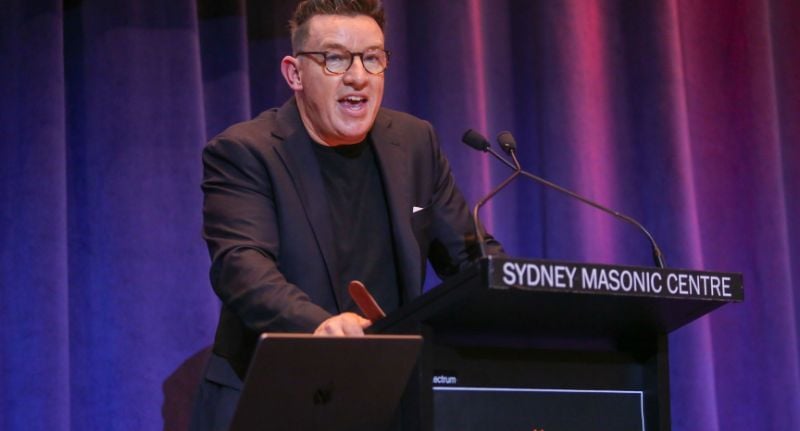
SXSW Sydney: IMAA says indies are no longer asking to join the conversation - they're setting it
Get ready, because 2026 will mark the Dawn of a New Era for Australia’s indie agencies.
That’s the message from Sam Buchanan, CEO of the Independent Media Agencies of Australia (IMAA), who said the FAST. FUTURE. PRESENT event at SXSW Sydney proved that independent agencies are no longer following the conversation – they’re setting it.
“I’ve never seen so much energy and activity in one room” Buchanan told Mediaweek. “It reminded me what a vibrant and manic industry that we work in. That was fantastic.”
The one-day conference brought together leaders from media, technology, and innovation to explore how agencies, platforms, and brands can future-proof creativity and connection in an age of constant change.
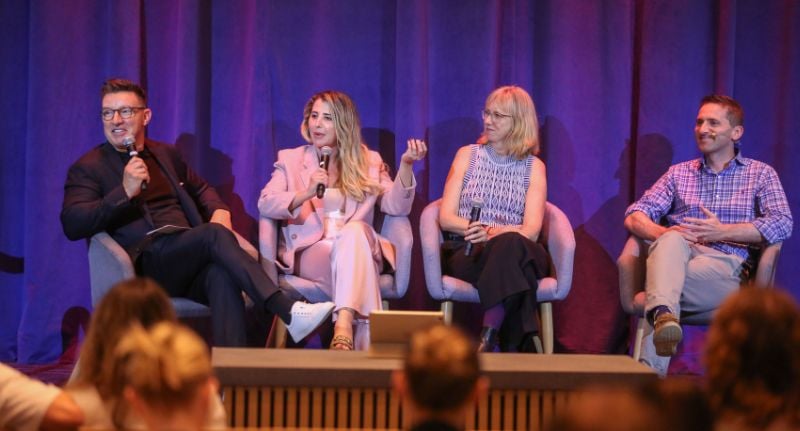
Credit: Jason McCormack
Rethinking how the industry searches, creates, and connects
Among the most talked-about sessions was Is Social the New Search?, featuring experts from TikTok, Pinterest, and Meta, who debated how discovery and intent are shifting.
Buchanan said the conversation captured the disruption happening across the industry.
“The first panel explored what’s happening with social search and how things like ChatGPT are reshaping the search engine experience,” he said.
“The way we know search engines today is going to be really challenged. So, it was a fascinating discussion about where this space is heading and what everyone will be doing over the next five years.”
The discussion echoed wider themes throughout SXSW Sydney, how emerging technologies like AI, machine learning, and conversational search are rewriting the rules of media buying, optimisation, and brand discovery.
In another session, The Future of Media, leaders from IAB Australia, Headspring, News Corp Australia, and the IMAA unpacked everything from unified measurement to the role of AI in ad delivery and verification, all while stressing collaboration as key to maintaining trust across the ecosystem.
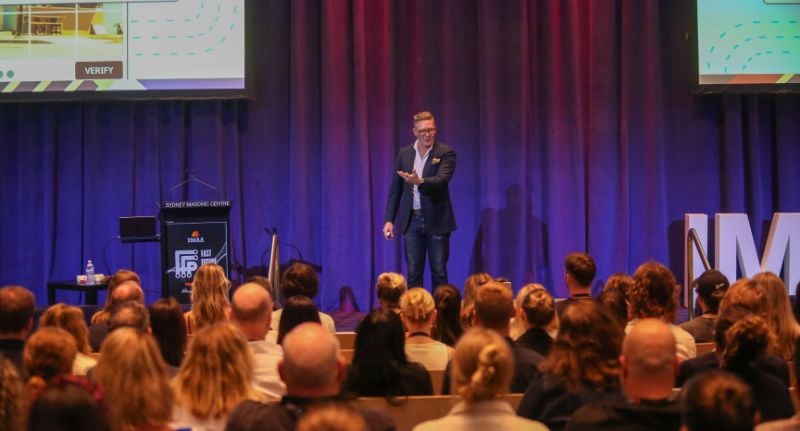
Credit: Jason McCormack
A new chapter for indies
The event’s final panel, featuring Gai Le Roy, Jessica Gilby, and Mark Burns, hit particularly close to home for Buchanan.
“The final panel talked about what agencies will look like in five years’ time, how we’ll be working, and where the opportunities will lie for independent agencies,” Buchanan said.
“It was a big topic, asking the question: ‘So what does it all mean for everyone in the room?’”
He said the day’s energy underscored how far the indie sector has come since the pandemic disrupted industry connection.
“Overall, the day was oversubscribed, there were more than 500 attendees, and it wrapped up with a networking session afterwards,” he said.
“Holistically, the indie sector loves to get together. They generally get on really well with one another. Since COVID, the industry’s been a bit challenged, events have been slower to return, but there’s definitely a new normal emerging.”
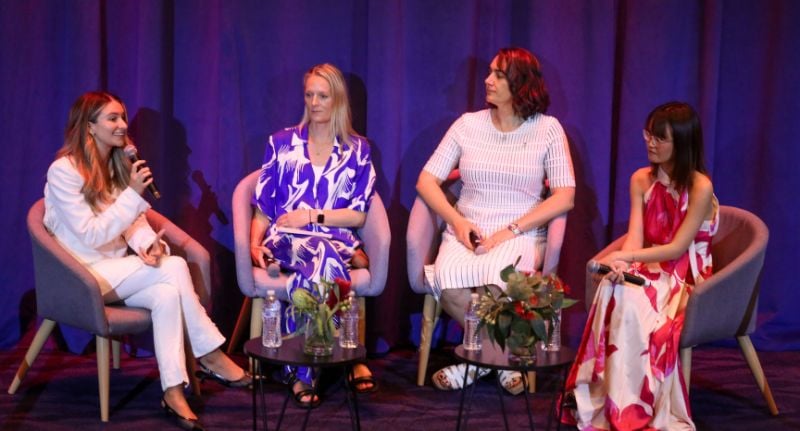
Credit: Jason McCormack
From catching up to leading the conversation
For the IMAA, Buchanan said FAST. FUTURE. PRESENT signalled a shift in how independents operate, from reactive to proactive.
“From an indie perspective, there’s been a real shift. In the past, independents were often the last to hear about certain things – information would filter down from the big networks to the indies. Now, we’re the first to hear about things,” he said.
“From an IMAA point of view, we’re no longer that disruptive, annoying industry body that was constantly fighting to be heard. We’re now the biggest media industry body in Australia. We’re not asking to be included in the conversation anymore… we’re setting it.”
The focus, he added, is now on preparing members for what’s next, especially as AI and automation transform agency models.
“Events like this are about getting all our members aligned, prepared, and educated on what’s coming next. It’s also about reinvesting in the human side of our industry. There’ll always be a need for relationships, but we also need smart people to manage new technologies,” he said.
“It was really about preparing ourselves, aligning on what we need to start doing in our businesses and everyday practices, to ensure we’re embracing all these opportunities. Everyone’s on a different journey. Some agencies are already fully AI-enabled. Others still think it’s called ‘A ONE’ and aren’t quite sure what’s going on.”
Main image: Sam Buchanan. Credit: Jason McCormack
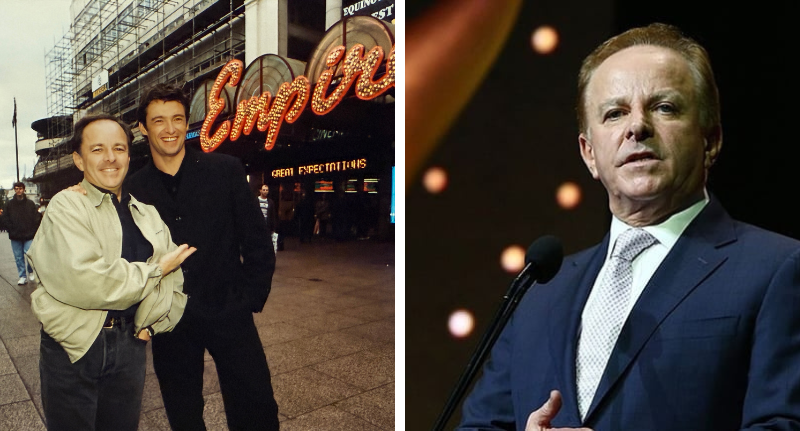
Stars gather for world premiere of The Great Entertainer, celebrating the life of Brian Walsh
A crowd of Australian screen, music and sporting talent gathered at Sydney’s Ritz Randwick for the world premiere of Foxtel Original feature documentary The Great Entertainer, a celebration of the late Brian Walsh, one of the nation’s most influential television figures.
The Great Entertainer traces the extraordinary life and career of Walsh, charting his pivotal role in transforming the Australian television industry and shaping the careers of stars including Nicole Kidman, Hugh Jackman, Kylie Minogue, and Jason Donovan.
Walsh, one of Australia’s most influential media executives and storytellers, died unexpectedly in March 2023, and this Foxtel Original documentary about his life was created by friends and colleagues who worked alongside him throughout his remarkable career.
It was a fitting tribute that its world premiere was held as part of SXSW Sydney, and was attended by Marcia Hines, Lincoln Younes, Danielle Cormack, Sara Wiseman, Ngali Shaw, Celia Ireland, Tai Hara, Julian Maroun, Deborah Hutton OAM, Matt Shirvington, and Craig Wing, alongside a host of Walsh’s industry peers, including Nine’s Amanda Laing.
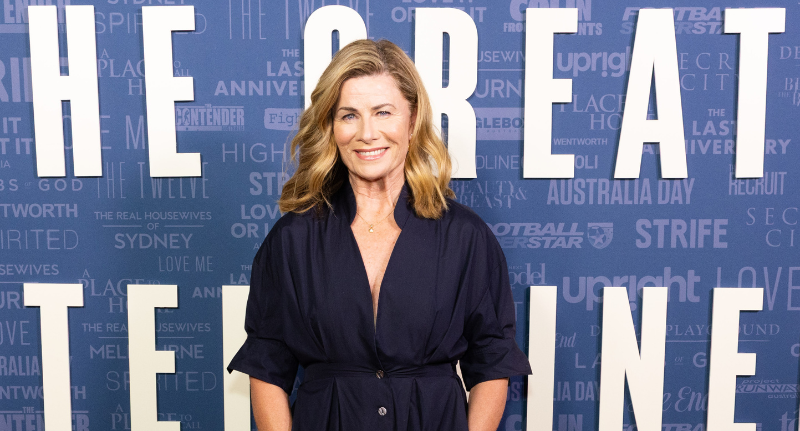
Deborah Hutton
A born showman and master storyteller, Walsh was behind some of Australian entertainment’s most defining moments, from the legendary Tina Turner “Simply the Best” NRL campaign to the re-launch of Neighbours.
During his 28-year tenure at Foxtel, he commissioned many of the country’s most iconic and internationally acclaimed series including Love My Way, Wentworth, Colin From Accounts, Australia’s Next Top Model and Gogglebox Australia.
The documentary also marks a significant milestone for the Foxtel Group as it celebrates 30 years of entertaining Australians – it will premiere on Foxtel and BINGE on Monday, 20 October.
Talking about Walsh before the premiere, Foxtel Group CEO Patrick Delany said, “Brian had a big impact on Australian TV and a big impact on Australian talent. That wasn’t just about what was on the screen, but very much what was off the screen.
He added, “He also had a big impact with audiences all around the world, especially in Australia.”
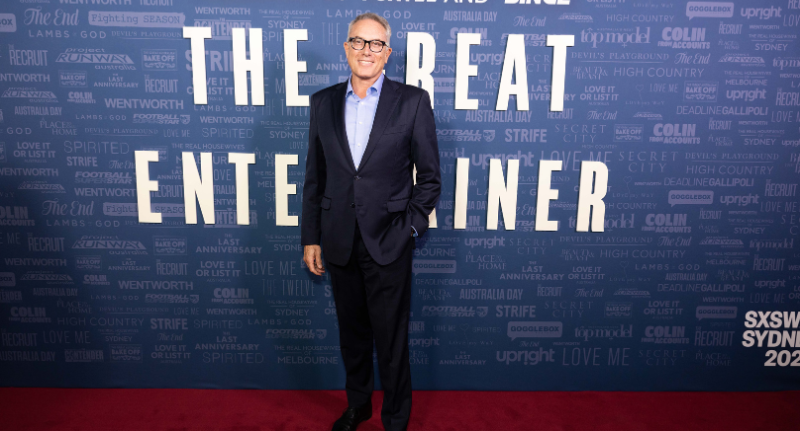
Patrick Delany
The film features a stellar line-up of his close friends, collaborators and industry luminaries, including Hugh Jackman who credited his career to Walsh.
Walsh saw him on stage in Beauty and the Beast and offered him a job presenting Fashion – a TV series with Melissa Hoyer.
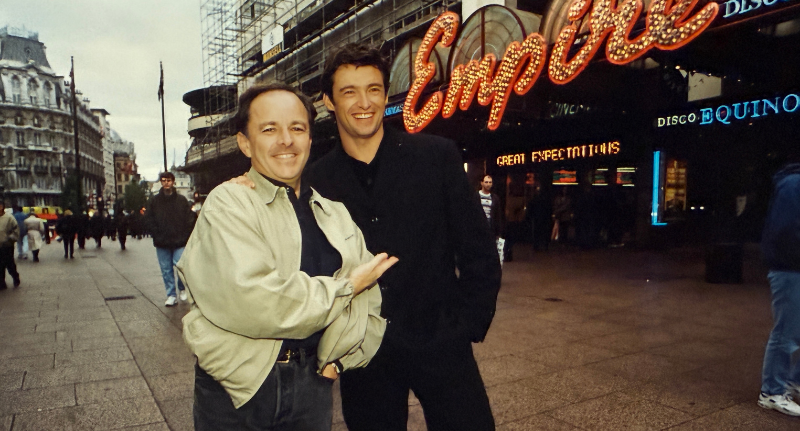
Brian Walsh with Hugh Jackman.
Each contribution paints a compelling portrait of a man whose creative instincts, humour, zest for life and unwavering commitment to Australian storytelling shaped generations.
During last night’s emotional premiere, guests also heard from Rudi McGregor, a producer on the documentary, his close friend Deborah Hutton, his younger sister Bernadette and Foxtel’s Lana Greenhalgh, Director of Scripted Originals, who worked closely with him.
“Brian was a visionary and the cultural heart of Foxtel for nearly three decades. He continually set the bar for premium and bold Australian storytelling and created countless memorable moments that launched careers and put Australian sport and television on the world’s stage,” said Greenhalgh.
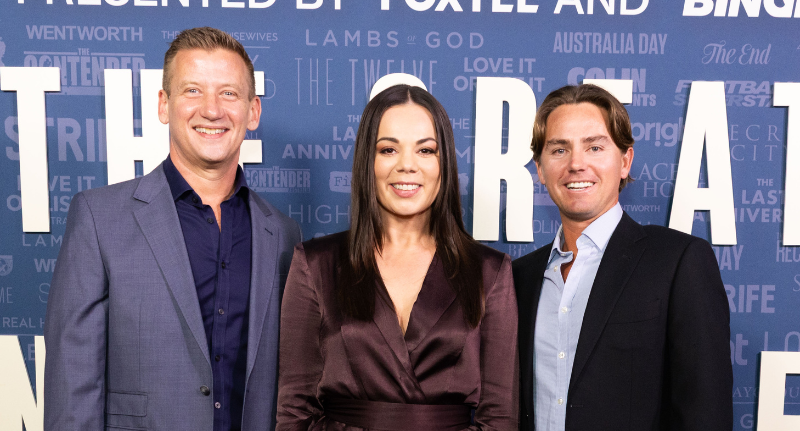
Stephen Baldwin, Lana Greenhalgh and Rudi McGregor.
Made by Shadow Productions for the Foxtel Group, the film is produced by Rudi McGregor, Mathew Brooks, Steve Cronan and Stephen Baldwin.
Executive Producers are Walsh’s late friend Graham McNeice, Rudi McGregor with Lana Greenhalgh and Alison Hurbert-Burns for the Foxtel Group. It is financed in association with Screen NSW and eligible for the SXSW Sydney Audience Choice Award.
The Great Entertainer premieres on Foxtel and BINGE on 20 October.
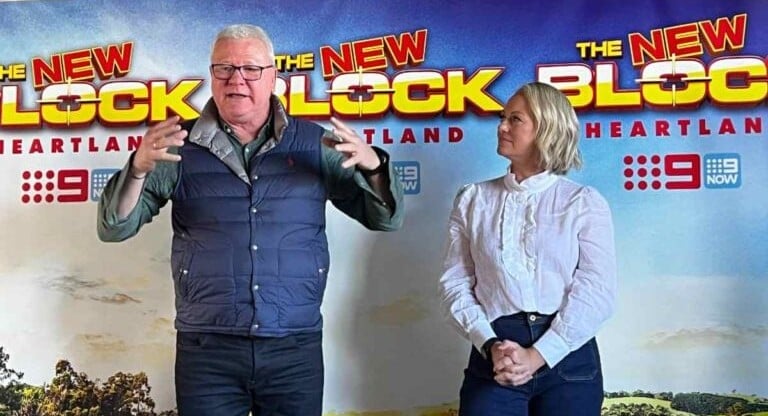
“Quite the surprise”: Shocked EP Julian Cress on 1000 episodes of The Block
The 1000th episode of The Block airs this coming Sunday night on Nine and while reaching 1000 episodes is an incredible milestone for any television series, it was an event that almost went unnoticed by The Block’s EP Julian Cress and the production team.
Julian Cress told Mediaweek that the only reason the milestone got on their radar was because a junior staffer on David Barbour’s post-production team did the math: “One of his young assistants who works in post-production, born this century, came to him and said: ‘I think that when you get to filming the last episode of this season, or the penultimate episode, I’ve done the math and this is what it is’. He rang me and said, ‘Jules, you’re not going to believe this’. I said, ‘no, you’re right, I’m not’.”
“It was quite a surprise, but a very happy one.”
Cress admits that it was humbling to discover that they had produced that many episodes and that having only discovered that the show had reached 1000 episodes after the bulk of recording on the season was done, they don’t have a party scheduled.
There are no plans to quickly pop down to the Cheesecake Shop to get something to celebrate.
“We haven’t had the time to do it yet, but perhaps when it goes to air, we’ll get together and we might crack a bottle of champagne,” Cress said. “I’ll see if I can find something from 2003, when the first episode went to air.”
Obviously, when the show started there was no expectation that the show would go on for as long as it has or to still be as big as it is after so many years. At a certain point, surely Cress and the team felt as comfortable as one can be in the industry that the show will keep going on. Cress disputes that as an idea.
“We’ve never taken anything for granted with regards to the longevity of the format on Australian screens. A lot of effort goes in every year to try to consider what it is that we could do with this show to reinvent it in a way that would appeal to an audience that’s seen it before. It’s incredible and very gratifying to us is that we’re now meeting people who are telling us that their parents loved watching the show when they were kids, and they now love watching the show as well.”
That the show has produced this many episodes and has run for as many years as it has, you’d also assume that Cress would be itching to do something else. But The Block is unique in that it isn’t just producing a TV program, but it is also the project management of houses being built as well. Cress continues to be passionate about the show because it leaves behind a physical reminder of what they worked on.
“The legacy of the show isn’t just the number of episodes that we’ve made, the number of episodes of TV. It’s also the fact that every time we finish doing a show, we’ve built five more beautiful homes. We’ve renovated apartment buildings and old picture theatres and motels,” Cress said.
“We’ve built brand new houses this year that will be the gateway to Daylesford for a very long time. What we leave behind us isn’t just ratings and memories for people who watch the show. It’s actual houses that we’ve built from scratch with our contestants that are going to be homes to people for generations to come.”
When you talk to Cress about The Block, he will talk about those working on the show as being like a family. It is a multigenerational show with kids of earlier production team members now working on the show. And he has jobs for his own kids eyed on the show should it continue long enough.
It’s that sense of family and legacy that lives on in The Block. These houses have been built for a TV show, but people will be living in these homes for decades to come, growing with families, starting families, building entire lives all because of this reality TV competition show.
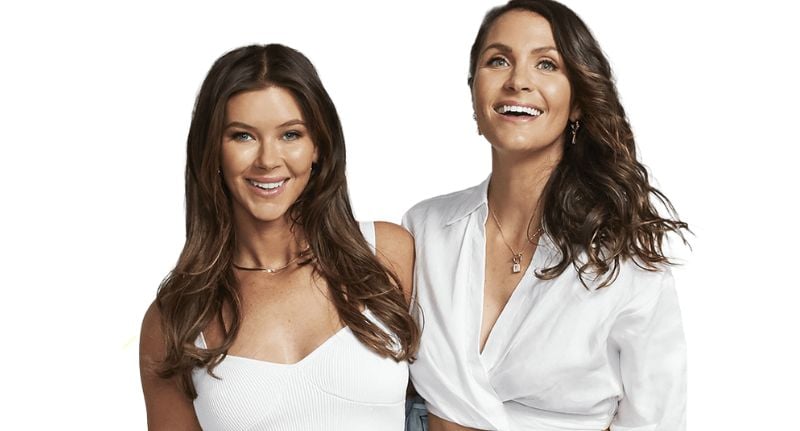
ARN parts ways with Brittany Hockley and Laura Byrne’s ‘Life Uncut’ podcast
The Australian Radio Network (ARN) has confirmed that its long-running partnership with Life Uncut, the popular podcast hosted by Brittany Hockley and Laura Byrne, will come to an end at the close of 2025.
An ARN spokesperson told Mediaweek, “After six successful years together, ARN and Life Uncut will part ways at the end of 2025, allowing us to focus on new iHeart Originals launching in 2026.”
The split marks the end of one of ARN’s most successful podcast partnerships, with Life Uncut consistently ranking among Australia’s top lifestyle and relationship shows.
The podcast has also spawned a broadcast spin-off, The 3pm Pick-Up, which airs nationally across the KIIS network.
Since its debut, Life Uncut has been a staple of ARN’s iHeartRadio podcast network.
While ARN has confirmed the partnership’s end, the future of Life Uncut itself remains unclear. The company said further details “will be shared at our Upfront on 29 October.”
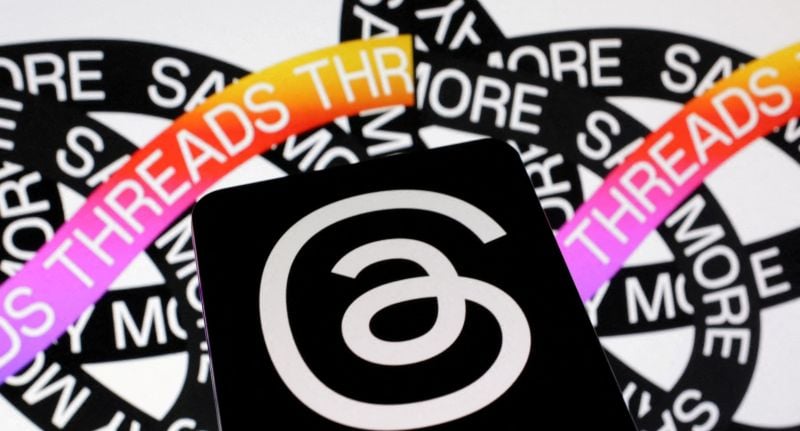
DoubleVerify expands AI-powered brand suitability to Meta's Threads
DoubleVerify (DV), a global software platform that helps advertisers verify media quality, optimise performance, and measure campaign outcomes, has expanded its brand suitability measurement across Meta’s Threads feed.
The move extends third-party verification tools to one of the fastest-growing social platforms in the market, giving global advertisers deeper transparency into the content and context surrounding their ads on Threads, a platform still finding its advertising rhythm amid Meta’s wider social ecosystem.
Building trust across emerging platforms
“As advertising evolves across emerging platforms like Threads, independent verification is critical to building trust and driving performance,” said Mark Zagorski, CEO of DoubleVerify.
“With this expansion, DV ensures that global brands have the transparency, confidence, and actionable insights they need to maximise the impact of their campaigns across Meta.”
For advertisers, Threads represents a distinctive environment, conversational, real-time, and community-driven.
But as the platform continues to grow, the speed and tone of user-generated content make reliable measurement essential. DV’s expansion aims to help brands verify that their ads appear beside contextually suitable content without sacrificing reach.
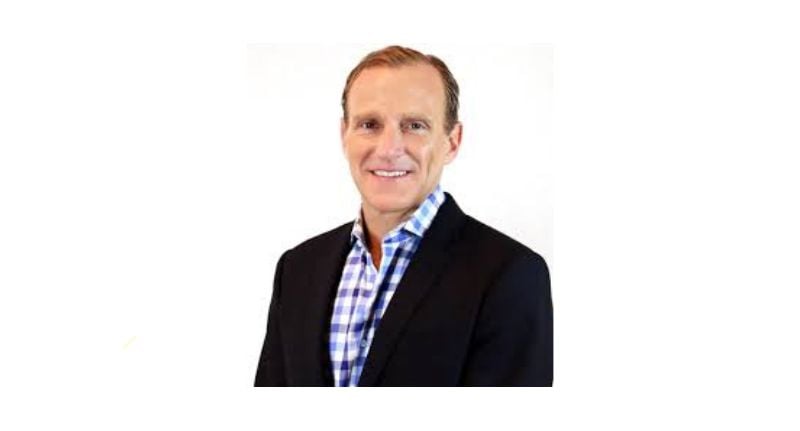
Mark Zagorski, CEO of DoubleVerify.
How it works
The new coverage leverages DV’s proprietary AI-powered Universal Content Intelligence™ engine, which analyses video, image, audio, speech, and text to deliver nuanced content classifications at scale.
Using a method called key frame extraction, the technology isolates key visual moments in videos, enabling faster and more precise analysis while cutting computing costs and environmental impact.
With this rollout, advertisers will benefit from:
• Proprietary AI classification: DV’s models analyse the content directly above and below ads to confirm suitability.
• Comprehensive coverage: Measurement now spans Threads, Instagram, Facebook, and Audience Network.
• Independent verification: DV continues to provide third-party, trusted measurement for global brands.
• Advertisers will also gain access to detailed measurement data through DV Pinnacle®, the company’s unified analytics platform, allowing real-time monitoring of campaign quality across Meta’s social suite.
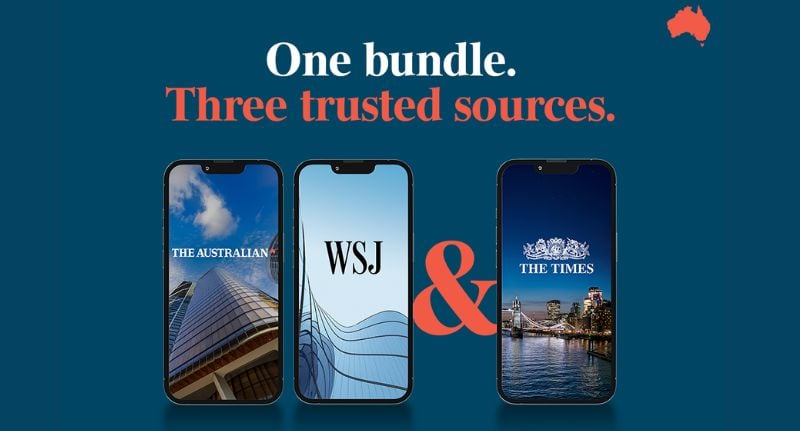
The Australian joins forces with The Wall Street Journal and The Times in news bundle
The Australian has unveiled a new digital subscription bundle that combines three heavyweight titles, The Australian, The Wall Street Journal, and The Times of London, offering readers a single access point to world-class journalism spanning local, financial, and international affairs.
The bundle gives readers digital access across websites and apps for all three publications: The Australian’s deep domestic analysis, The Times of London’s coverage of UK and European affairs, and The Wall Street Journal’s globally renowned business and finance reporting.
The Australian’s Managing Director and Publisher, Nicholas Gray, said the initiative strengthens the brand’s global proposition. “The new digital bundle allows readers to get the vantage points of three of the biggest and best English-speaking newspapers in the world, in one bundle.
“By leveraging our global network, we’re pleased to offer great value to readers with access to the world’s best journalism in this powerful package. It’s more perspective, more expertise, and more of the news readers can use,” Grey said.
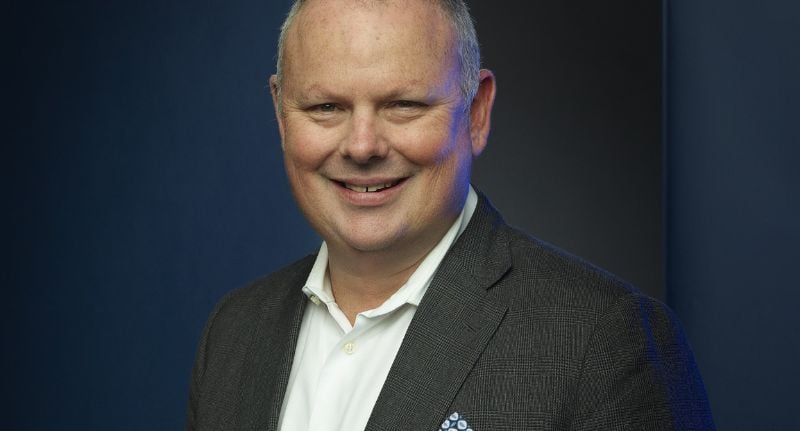
The Australian’s Managing Director and Publisher, Nicholas Gray.
While financial details haven’t been disclosed, the bundle will be positioned as a premium tier within The Australian’s subscription model, a strategy in line with News Corp’s broader focus on reader revenue and brand partnerships across markets.
The collaboration effectively links three of News Corp’s most influential mastheads under one digital roof, offering what Gray calls “more of the news readers can use”, a nod to the brand’s focus on utility-driven journalism and informed decision-making.
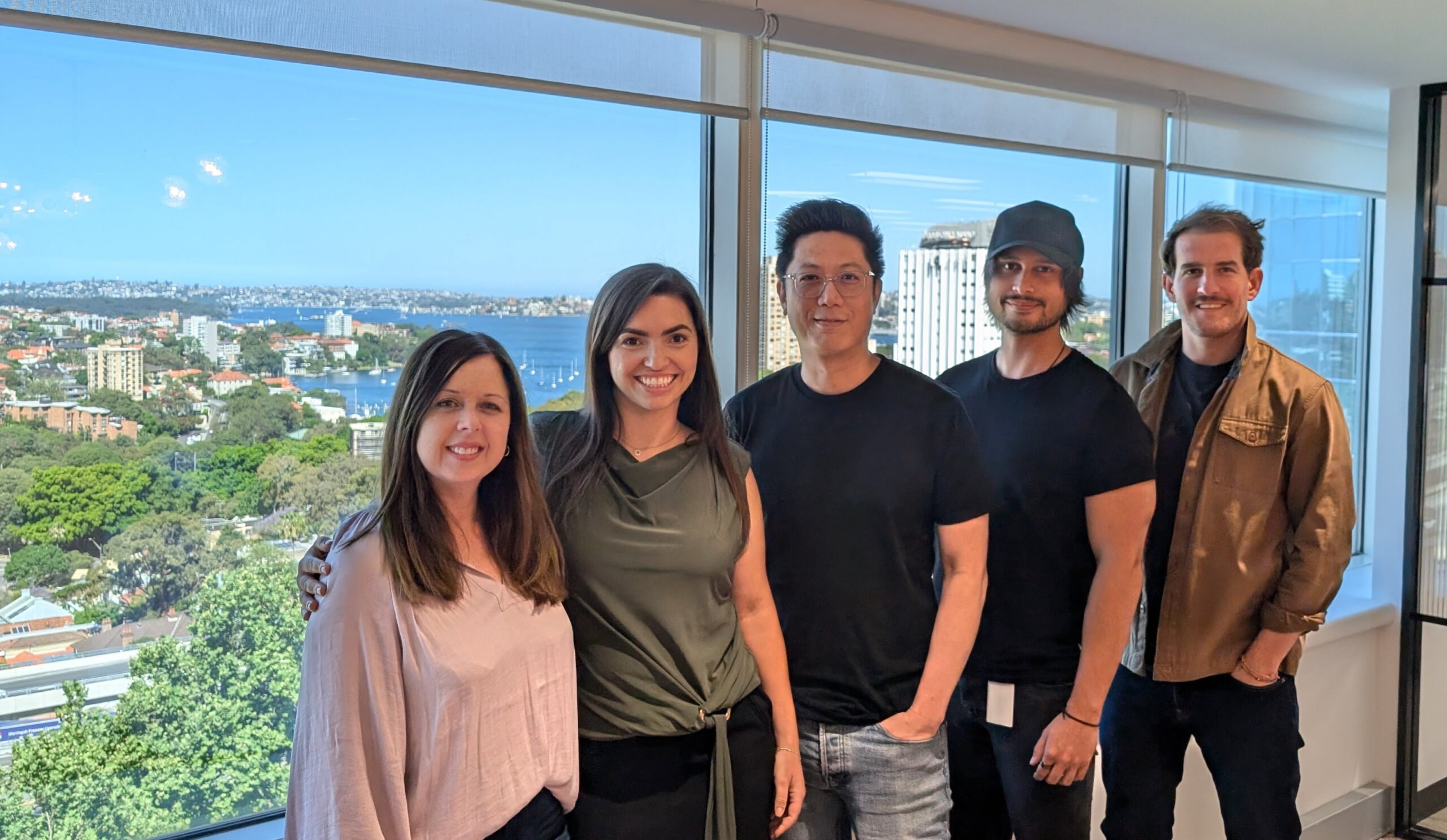
Avenue C bolsters leadership with five senior hires
Independent media agency Avenue C has announced five new senior appointments, including four senior partners and a newly created head of data and insights role.
The agency has appointed Tania Carr and Matt Furlong as Business Partners, Lorena Danes as Media & Investment Partner, and Tom Carey as Digital Partner.
Dennis Wong joins in the new role of Head of Data and Insights, where he will help clients connect category, sales, and media data to uncover sharper insights and drive performance.
For Avenue C, the new hires reflect a deliberate focus on building a team that blends network experience with indie agility.
Will Chapman, Managing Partner at Avenue C, said the agency’s structure allows senior talent to remain close to the work while maintaining speed and accountability.
“We’ve built a team of people who’ve done the network thing and now want to use those years of experience to get back into the work that moves brands and builds businesses,” Chapman said.
“These hires strengthen our depth of experience while keeping our structure flat and fast. Everyone here is accountable, empowered, and hands-on. That has always been the Avenue C way.”
The agency, which counts several major Australian brands among its clients, has continued to grow steadily while maintaining its independent ownership and collaborative culture.
Embedding outcomes into every brief
Joining from a background across both agency and client-side roles, Danes said Avenue C’s appeal lies in its genuine commitment to outcome-based planning.
“I’m thrilled to be joining such a high-calibre team, bringing together diverse expertise to create something truly distinctive in the industry,” Danes said.
“While many talk to clients about attention and business outcomes, what I find refreshing about Avenue C is that these principles are not just conversations, they’re actively embedded in the way we plan, buy, and optimise media.
“I’m excited to contribute to the growth of our clients’ brands and businesses and equally energised to be part of a culture built for seasoned media professionals who are deeply passionate about their craft.”
Turning data into decisions
The agency’s newest function, led by Wong, signals a stronger emphasis on transforming data into meaningful insight.
“We’re making data useful, not just another dashboard,” Wong said. “The focus is on real-world insights that give brands an edge.”
Wong’s appointment rounds out a team that Chapman says is designed to maintain Avenue C’s client service excellence while giving senior leaders the space to think long-term.
“Experience is our unfair advantage, and the reason we consistently deliver tangible business results for our clients,” Chapman added. “We’re excited to have four highly respected senior talents join our team who can apply their excellent knowledge to our clients’ business.”
Keeping independence sharp
As Avenue C continues to scale, the hires reflect a broader trend among independents investing in senior expertise to compete with holding groups on strategy, data, and delivery, while keeping decision-making close to clients.
For Chapman, that balance between experience and independence is the key to the agency’s growth. “We’re not trying to be bigger for the sake of it,” he said, “we’re investing in people who know how to make a difference.”
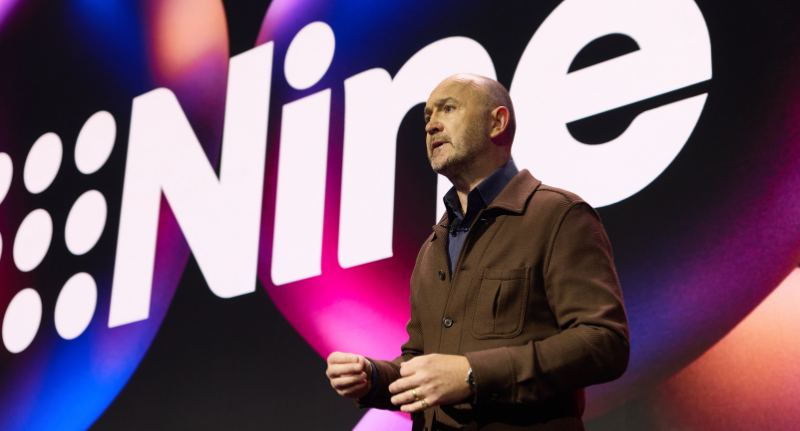
Nine Upfront 2026: The verdict from Australia’s media and marketing leaders
ahm has announced the appointment of TBWA\Australia as its new creative agency partner, following a competitive pitch process involving several leading Australian agencies.
The appointment marks a major creative and strategic shift for the Medibank-owned brand as it continues to evolve beyond health insurance, expanding into categories including travel, pet, life, income, car, and home insurance.
Expanding the brief
According to ahm, the pitch brief was designed to find a partner capable of delivering world-class creative thinking and commercial value, supported by an integrated communications approach across digital, social, and earned channels.
TBWA\Australia was selected for its distinctive creative approach, strategic leadership powered by data, and its modern, integrated offering that includes PR and social through Eleven.
The agency said its secret weapon was being able to view the brief through a Gen Z lens, ensuring cultural and generational relevance with ahm’s core audience while demonstrating a deep understanding of the brand’s personality and growth ambitions.
‘Bold thinking and a challenger mindset’
ahm’s Head of Marketing, Samantha McLeod, said the new partnership marks an exciting next step in the brand’s journey.
“We’re thrilled to welcome TBWA\Australia on board. They bring bold thinking, strategic depth and a challenger mindset that aligns perfectly with our ambitions,” McLeod said.
“This appointment signals exciting things to come in ahm’s brand and communications strategy. TBWA will help shape the next chapter with creativity, strategic thinking and a challenger spirit.
“I’d also like to acknowledge Droga5 for their partnership, creativity and dedication over the past five years.”
The new partnership will see TBWA\Australia and Eleven lead ahm’s upcoming creative campaigns and integrated brand activity, with a focus on cultural relevance, community engagement, and digital innovation.
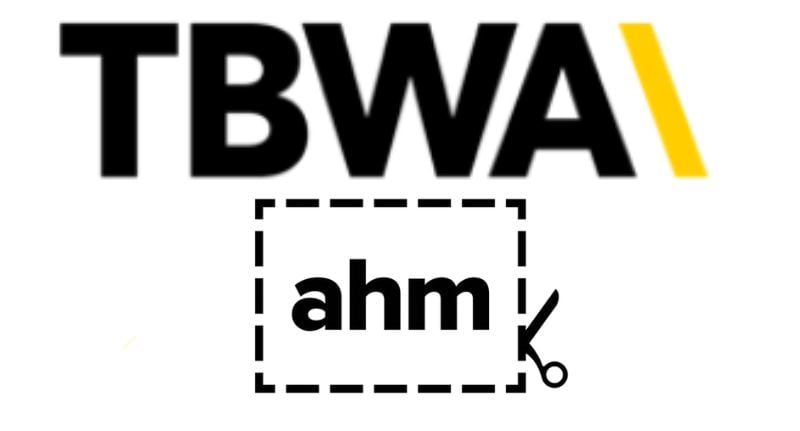
ahm appoints TBWA Australia as new creative agency
ahm has announced the appointment of TBWA\Australia as its new creative agency partner, following a competitive pitch process involving several leading Australian agencies.
The appointment marks a major creative and strategic shift for the Medibank-owned brand as it continues to evolve beyond health insurance, expanding into categories including travel, pet, life, income, car, and home insurance.
Expanding the brief
According to ahm, the pitch brief was designed to find a partner capable of delivering world-class creative thinking and commercial value, supported by an integrated communications approach across digital, social, and earned channels.
TBWA\Australia was selected for its distinctive creative approach, strategic leadership powered by data, and its modern, integrated offering that includes PR and social through Eleven.
The agency said its secret weapon was being able to view the brief through a Gen Z lens, ensuring cultural and generational relevance with ahm’s core audience while demonstrating a deep understanding of the brand’s personality and growth ambitions.
‘Bold thinking and a challenger mindset’
ahm’s Head of Marketing, Samantha McLeod, said the new partnership marks an exciting next step in the brand’s journey.
“We’re thrilled to welcome TBWA\Australia on board. They bring bold thinking, strategic depth and a challenger mindset that aligns perfectly with our ambitions,” McLeod said.
“This appointment signals exciting things to come in ahm’s brand and communications strategy. TBWA will help shape the next chapter with creativity, strategic thinking and a challenger spirit.
“I’d also like to acknowledge Droga5 for their partnership, creativity and dedication over the past five years.”
The new partnership will see TBWA\Australia and Eleven lead ahm’s upcoming creative campaigns and integrated brand activity, with a focus on cultural relevance, community engagement, and digital innovation.
Media
ABC reporter investigated over outlaw podcast fallout
As Calum Jaspan and Kate McClymont report in The Sydney Morning Herald, the broadcaster later confirmed the podcast was never fully approved and pulled support once gambling ads appeared in the first episode, breaching ABC’s external work rules.
AI
Reddit’s new AI gives alarming advice
As 404 Media’s Emanuel Maiberg’s explains, the feature pulls from Reddit’s massive archive of user posts. The recommendation was flagged by moderators.
Social media
Radio
ARN parts ways with ‘Life Uncut’ podcast
An ARN spokesperson told Mediaweek, “After six successful years together, ARN and Life Uncut will part ways at the end of 2025, allowing us to focus on new iHeart Originals launching in 2026.”
Publishing
To Top
